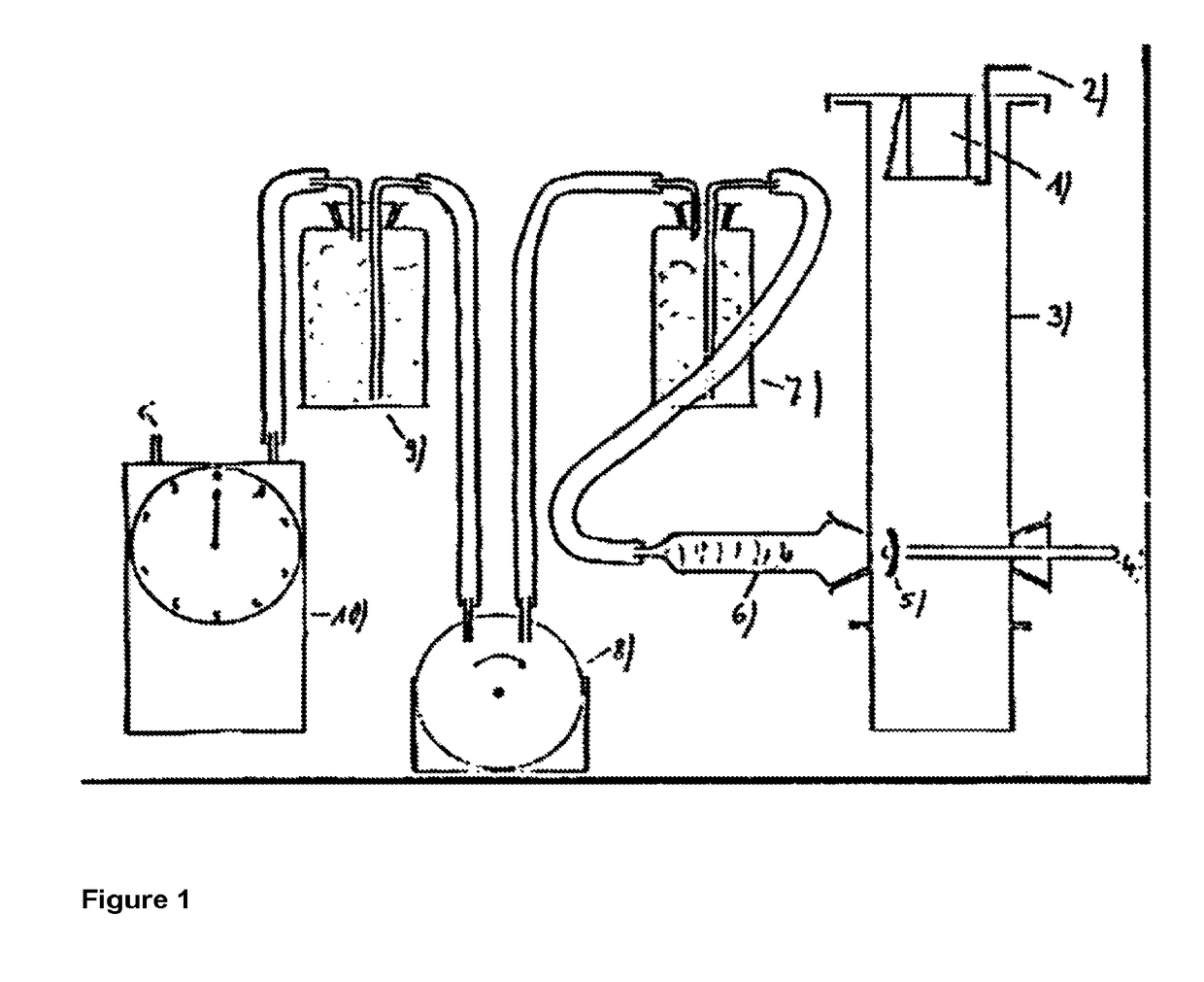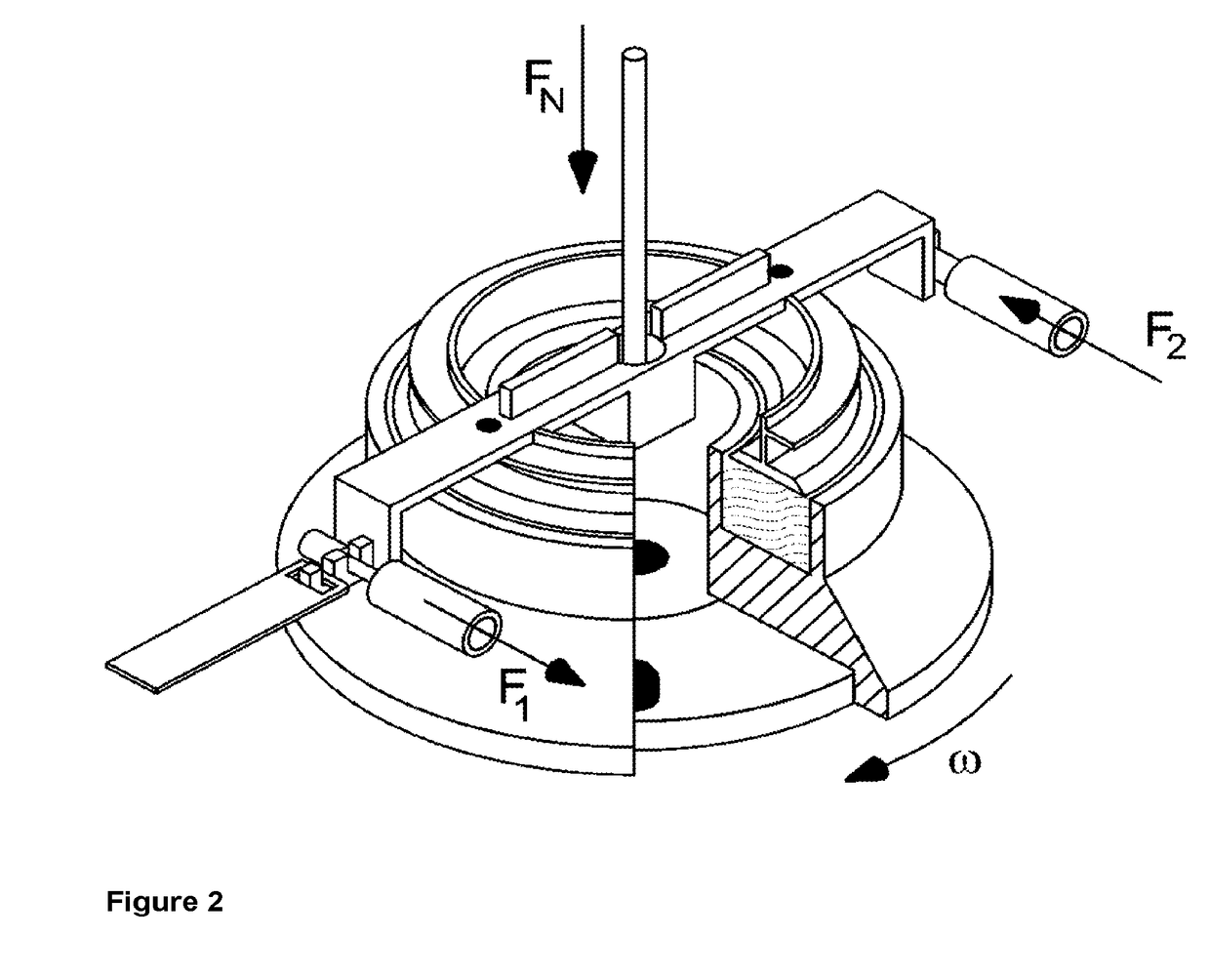Surface treatment of particles and their use
a surface treatment and particle technology, applied in the field of surface treatment of particles and their use, can solve the problems of thermoplastic pigment mixture deposition, restricted deformation, and undesired side effects, and achieve the effects of reducing pressure filter values, shortening associated cleaning cycles, and increasing the service life of processing equipmen
- Summary
- Abstract
- Description
- Claims
- Application Information
AI Technical Summary
Benefits of technology
Problems solved by technology
Method used
Image
Examples
example 1
Synthesis
[0162]The polyethers used (table 1, PE) have, at the chain ends, respectively an allyl ether (PE1-PE8) or vinyl ether function (PE9) and a hydroxy group (PE1-PE9), and are characterized by different mass contents of oxyethylene, oxypropylene, and oxybutylene (EO / PO / BO mass contents, based on the polyether moiety without allyl / vinyl group) and molar masses (Mw). The vinyl polyether PE9 has an oxybutylene moiety as fragment with the index o according to formula (III), in this case —O—(CH2)4—.
[0163]Glycerol monoallyl ether, used in the polyether PE10, and trimethylolpropane monoallyl ether, used in the polyether PE11.
[0164]
TABLE 1Composition of the polyethers usedPOEOBOMwPolyether[% by wt.][% by wt.][% by wt.][g / mol]PE177231057PE28020518PE31000414PE468321417PE588121336PE672281219PE790101180PE88010101194PE9831071194PE1090101248PE1190101298
[0165]The hydrosiloxanes used (table 2, SiH), are characterized by different SiH contents and viscosities.
[0166]
TABLE 2Properties of the hydr...
example 2
Emulsions
[0170]185 g of O12 were added within 20 minutes with cooling, under conditions of shear (Mizer disc, 2000 rpm) to an emulsifier solution made of 40 g of an ethoxylated stearic acid with HLB value of about 18.8 and 60 g of demineralized water. The mixture was then subjected to shear for a further 20 minutes. This gave a paste with increased viscosity. 214 g of demineralized water were then added within 10 minutes under conditions of shear. This gave a white emulsion with about 45% by weight solids content. Finally 0.15% of an aqueous solution of 20% by weight of methylisothiazolinone (MIT) was added to preserve the emulsion.
example 3
Surface Treatment of Particles
[0171]V1: Dry-phase Treatment of TiO2 Particles
[0172]Starting material for the dry surface treatment of titanium dioxide with polyethersiloxanes was a TiO2 in rutile form with an inorganic modification system made of silicon oxide and aluminum oxide. The quantity stated in table 4 of polyethersiloxane (surface treatment agent) was admixed with said powder, and the mixture was homogenized for 60 seconds in a Lödige mixer. The polyethersiloxane-wetted TiO2 was then dry-milled in a steam-jet mill using steam at 18 bar. The milling can alternatively be achieved by means of a pin mill, air-jet mill, roll mill, or tubular ball mill.
[0173]V2: Liquid-phase Treatment of TiO2 Particles
[0174]Starting material for the wet surface treatment of TiO2 with polyethersiloxanes was a TiO2 filter cake after inorganic modification, where the TiO2 was in the rutile modification, and the inorganic modification system was made of silicon dioxide and aluminum oxide. Said filter...
PUM
| Property | Measurement | Unit |
|---|---|---|
| density | aaaaa | aaaaa |
| temperature | aaaaa | aaaaa |
| pressure | aaaaa | aaaaa |
Abstract
Description
Claims
Application Information
 Login to View More
Login to View More - R&D
- Intellectual Property
- Life Sciences
- Materials
- Tech Scout
- Unparalleled Data Quality
- Higher Quality Content
- 60% Fewer Hallucinations
Browse by: Latest US Patents, China's latest patents, Technical Efficacy Thesaurus, Application Domain, Technology Topic, Popular Technical Reports.
© 2025 PatSnap. All rights reserved.Legal|Privacy policy|Modern Slavery Act Transparency Statement|Sitemap|About US| Contact US: help@patsnap.com



